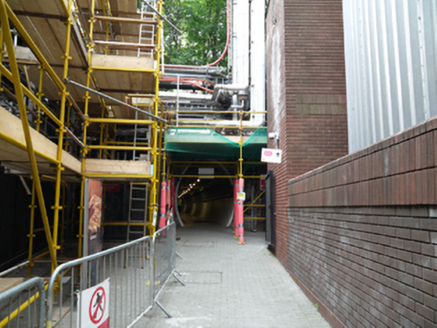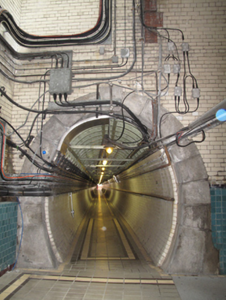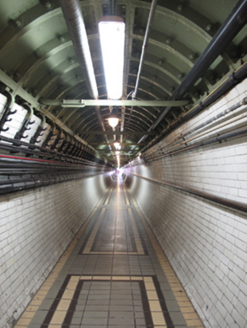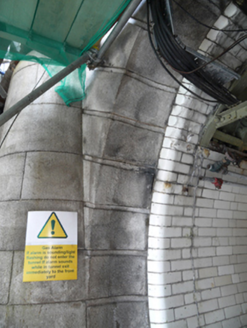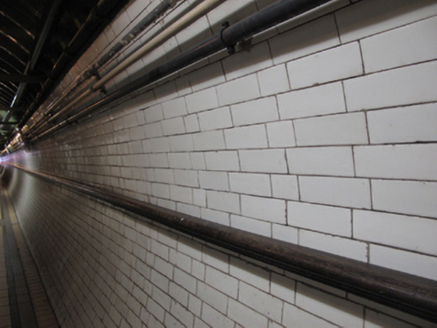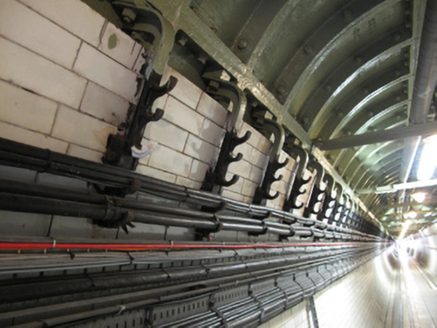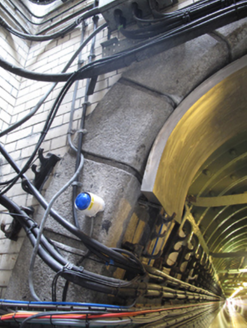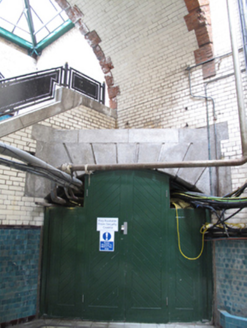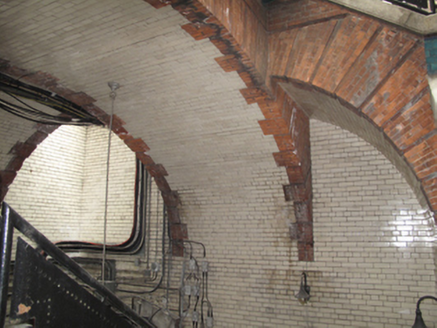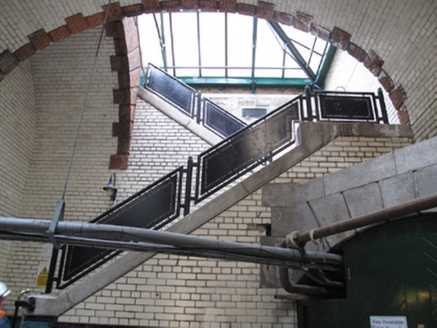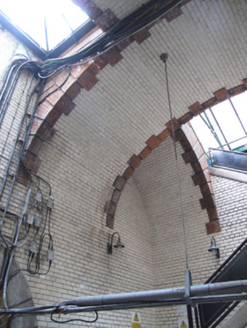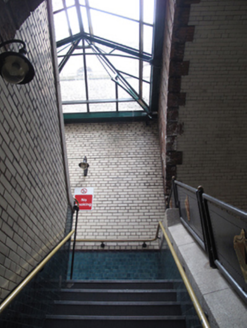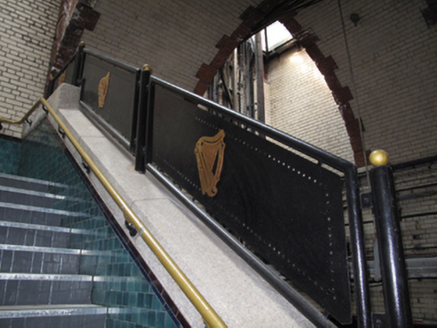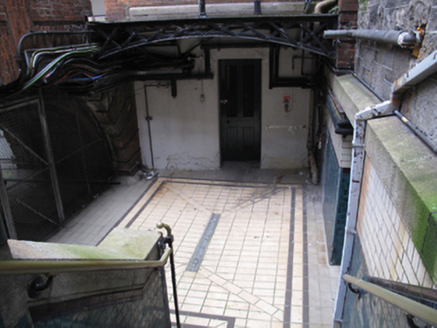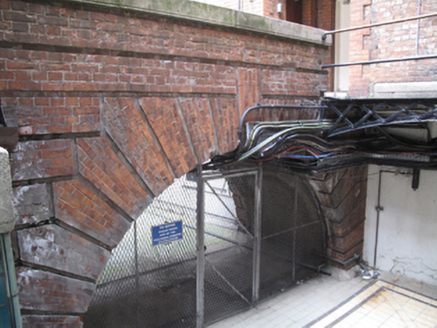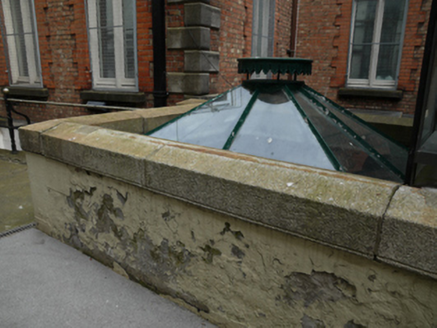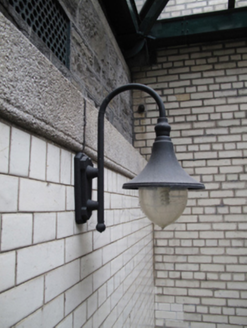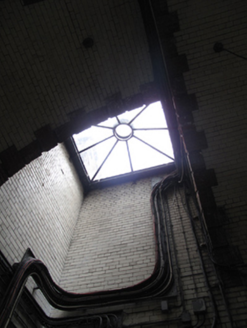Survey Data
Reg No
50080142
Rating
Regional
Categories of Special Interest
Architectural, Historical, Technical
Original Use
Tunnel
In Use As
Tunnel
Date
1890 - 1900
Coordinates
314186, 233935
Date Recorded
25/06/2013
Date Updated
--/--/--
Description
Elliptical-vaulted glazed brick-lined tunnel, constructed 1895 to connect upper and lower levels of Guinness brewery. Cast-iron panels to ceiling, cast-iron brackets to west elevation. Channelled granite surround to round-headed entrance to tunnel, yellow brick, laid in English garden wall bond, surrounding opening. Subterranean entrance porch to south, glazed clerestory lights, accessed via dog-leg stairway, flanked by glazed brick walls, brass handrails, granite coping. Vaulted ceiling with red brick spandrels, red brick voussoirs, glazed brick soffits. Cast-iron lamps to walls.
Appraisal
The site north of James's Street was acquired by Guinness in 1873 to expand the brewing enterprise, and was mainly used for cooperage, racking and dispatching. This tunnel was constructed in the closing years of the nineteenth century to carry beer lines from the vat houses on the Upper Level, which was the older part of the site, to the racking shed on the Lower level, where the porter was put into casks for distribution. It also served as a pedestrian connection between the two sites, and still does today. James Henry Greathead, an engineer who worked on the London Underground, undertook the excavations for the tunnel. This tunnel is an interesting example of civil engineering in the closing years of the nineteenth century, and is an important physical reminder of the industrial heritage of Dublin. As the northern part of the site is at a higher level, access is via a staircase in an underground lobby. Coloured glazed brick adds visual interest to the entrance lobby, while pipes and cast-iron barrel vaulting provides technical interest. It was one of three tunnels connecting the two Guinness sites; one for the light rail system, no longer extant, and one later one for the new electrical power station, now disused.
